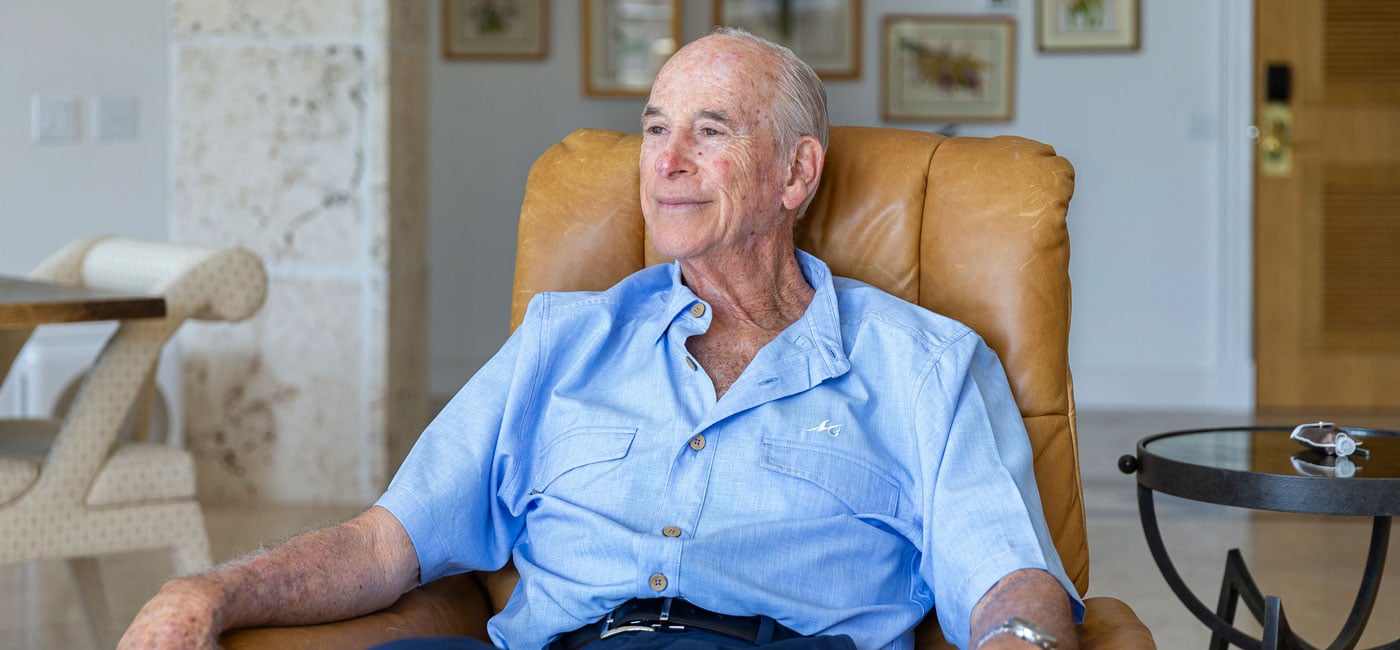Surveillance for a Silent Killer
Editor’s note: To protect his family’s personal health information, we are not publishing Don’s last name.
During the sweltering summer heat, Don walks the length of his Longboat Key building lobby. Back and forth. Fourteen loops, 16 loops, sometimes 18 loops.
He’s tall, thin and built like an athlete. He moves with the grace not often seen in a 77-year-old, most likely thanks to years of playing football and basketball and running track and field.
Watch him walk, and you’d never know. Don is battling pancreatic cancer.
Had it not been for a twist of fate, Don wouldn’t be walking the lobby, fighting his disease one step at a time. Instead, the disease could still be secretly growing inside him, only making itself known when it was too late.
About 10 years ago, Don’s daughter sent her DNA to a private genetic testing service on a whim. The results showed she carried a BRCA1 mutation. The mutation is passed down from a parent and carries an increased risk for breast, pancreatic, ovarian and prostate cancers. Ashkenazi Jewish women like Don’s daughter are more than 10 times more likely to have a BRCA1 or BRCA2 mutation than women in the general U.S. population.
Don and his wife, Randi, thought their daughter inherited the mutation from Randi, who had a history of breast cancer. However, she tested negative for the mutation. That left only one other possibility.
“It was a body blow, a shock,” Randi said of Don testing positive for the BRCA1 mutation.
Don’s internist recommended annual mammograms and abdominal scans. Year after year, his scans showed nothing. Then, on May 3, 2023, radiologists identified a pancreatic tumor on his scan.
“It was a wrenching, lifechanging bit of news, no matter what,” Randi said. “He was taking these tests every year like a dental cleaning, but when we heard it was cancer and then pancreatic cancer, it’s a very big emotional adjustment for us and our family.”
A Disease on the Rise
Pancreatic cancer is rising in incidence and is now the 10th most common cancer in the United States. Pancreatic cancer is also the third leading cause of cancer-related deaths in the U.S. and is projected to be the second leading cause by 2040. While the five-year relative survival rate has increased to 12.5%, symptoms can be vague — abdominal or back pain, unintentional weight loss, loss of appetite, itching, yellowing of skin and the whites of the eyes. Most patients present with later-stage disease.
The cause for most pancreatic cancers is still unknown. In addition to factors such as age, sex, race and family history, modifiable factors shown to increase the risk for pancreatic cancer include smoking and being overweight or obese. Other lifestyle factors that may influence pancreatic cancer risk include diets with high amounts of red and processed meats, heavy alcohol consumption and physical inactivity.
Having a personal history of conditions including chronic pancreatitis (inflammation of the pancreas), new-onset or chronic type 2 diabetes and precancerous pancreatic cystic lesions also increase the risk.
Pancreatic cancer tends to run in families, with about 10% to 15% of pancreatic cancers occurring as a result of an inherited genetic mutation that is passed from generation to generation.
The five-year survival rate for stage 4 pancreatic cancer that has spread to other organs is 3%. If diagnosed at stage 1, or when the cancer hasn’t spread outside the pancreas, the five-year survival rate is 44%.
Although most pancreatic cancers are difficult to detect early, individuals like Don with a known genetic mutation or identified pancreatic cysts have the best chance at prevention and detection of early, operable disease and improved survival. To help these people, Moffitt Cancer Center opened a Pancreatic Interception Center in March 2023 that offers a comprehensive surveillance program, pushing pancreatic cancer prevention into the forefront.
A Vision Driven by Family
Jennifer Permuth, PhD, vice chair of research for Moffitt’s Gastrointestinal Oncology Department, knows firsthand that prevention is the best way to fight pancreatic cancer. Her father has a history of intraductal papillary mucinous neoplasms (IPMN), the most common type of precancerous pancreatic cyst. Thanks to the incidental finding of the cyst 15 years ago and surgery at Moffitt to remove it, he is alive today.
Permuth’s sister, Rachel, passed away from colorectal cancer in 2022 at the age of 44. Genetic testing revealed Rachel inherited a mutation that causes Lynch syndrome, the most common cause of hereditary early onset colorectal cancer, from their mother’s side of the family. Permuth subsequently tested positive for the mutation, putting her at higher risk for colorectal, gynecological, pancreatic and other cancers associated with Lynch syndrome.
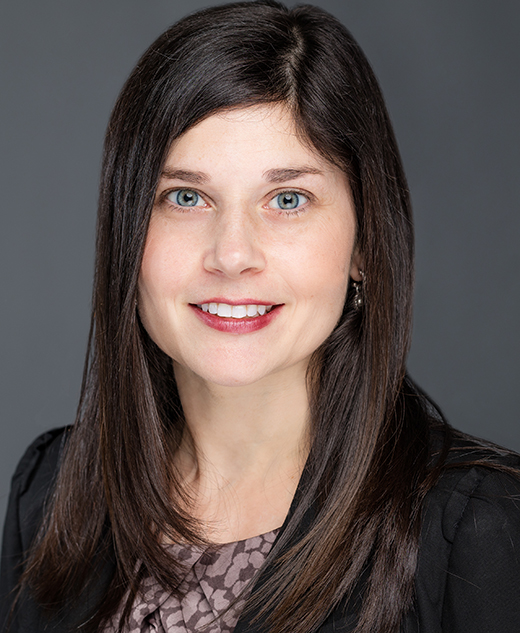
“I am at very high risk, and even before my father’s and sister’s diagnoses, I wanted our Moffitt team to offer a top-notch surveillance clinic for individuals and families at increased risk for pancreatic cancer,” Permuth said. “I always wanted a place where I could feel that I was being watched closely and could empower myself with the tools to make sure that if a cancer is detected, it’s as early as possible.”
Permuth has spent the past few years trying to shape this vision. When therapeutic endoscopist and functional medicine expert Shaffer Mok, MD, joined the Gastrointestinal Oncology team in 2022, the pair were able to make the first-of-its-kind surveillance clinic a reality. The clinic monitors people with genetic mutations that predispose them to pancreatic cancer as well as those with pancreatic cysts.
“This is standard across many centers in the United States, but the difference between us and those centers is that we are giving people a comprehensive lifestyle prescription of things that are based on evidence that they can do to kind of reclaim their disease and potentially impact their disease state and risk of pancreatic cancer in the future,” Mok said.
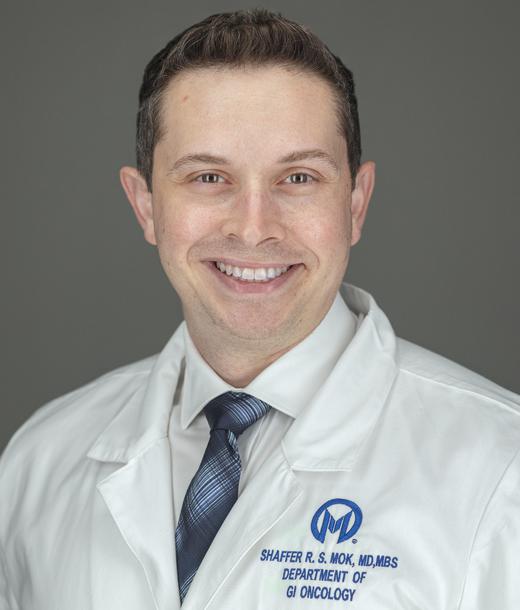
The number of people with pancreatic cysts is rising, mostly because people are living longer, doctors are ordering more imaging for patients and imaging techniques have improved. Cysts can be benign, premalignant or malignant. Most patients have IPMNs, premalignant precursors to pancreatic cancer that carry a risk of 3% to 60% for becoming cancerous. Because the risk range is so large, it’s important to have all the pieces of the puzzle when surveilling these patients.
The Pancreatic Interception Center uses endoscopic ultrasounds for the most accurate diagnostics. The procedure is more likely to detect cysts that are commonly missed on a standard MRI. It is also one of only 12 centers in the U.S. that uses an endoscopic technique that can look at the lining of the cyst in real time. Tissue samples and advanced genetic testing are also used to better individualize surveillance plans.
Since the Pancreatic Interception Center opened, it has seen more than 1,200 patients, the majority with pancreatic cysts. The center has performed more than 150 endoscopic procedures, and about 30 patients have had surgery to remove high-risk cysts. All the patients, whether they have cysts or a genetic predisposition, are offered educational material and an individualized lifestyle plan, which could include tobacco cessation counseling, diet templates, supplement recommendations and exercise programs. The goal is to reduce anxiety and determine the best course of action for each patient.
“Just because you have a cyst in your pancreas doesn’t mean it’s the end of the world. Just because you have a genetic condition that can make you at risk for pancreatic cancer doesn’t mean you’re going to get it,” Mok said. “But getting somewhere like the Pancreatic Interception Center that will allow you to take it off your plate and let your providers watch it for you is most important.”
Expanding the Research
In addition to following and treating patients, the Pancreatic Interception Center is focused on research. While the surveillance program offers hope for patients with genetic mutations or cysts, the two patient populations make up only a small portion of pancreatic cancer patients.
Permuth is the co-founder of the Florida Pancreas Collaborative, a statewide initiative that aims to advance research for individuals with or at risk for pancreatic cancer, with emphases on early detection efforts and addressing the disproportionate burden of disease among Black people. With funding from the National Cancer Institute and collaborations among several institutions, she is co-leading a study with abdominal radiologist Daniel Jeong, MD, that focuses on finding a better minimally invasive way to distinguish between high- and low-risk IPMNs. The study uses an approach that combines computer-detected features that cannot be seen with the naked eye along with biomarkers, called microRNAs, from a blood test.
“In the future, as we monitor high-risk individuals over time in our Pancreatic Interception Center and counsel patients about their medical management, it will be really helpful to see if levels of these biomarkers are changing and/or if the computer is telling us that imaging features associated with more aggressive lesions are detected,” Permuth said.
Preliminary data show this novel approach has superior sensitivity and specificity compared with standard classification methods and may more accurately predict high-risk cysts.
“I want to see us save lives by preventing the disease altogether, or if we catch it, catch it as early as possible,” she said.
Moffitt will also be the first institution to incorporate various biomarkers with a natural agent to help prevent IPMN progression to malignancy. Through a National Cancer Institute-sponsored chemoprevention trial, doctors are aiming to find a new way treat IPMNs beyond the traditional “watch and wait” approach.
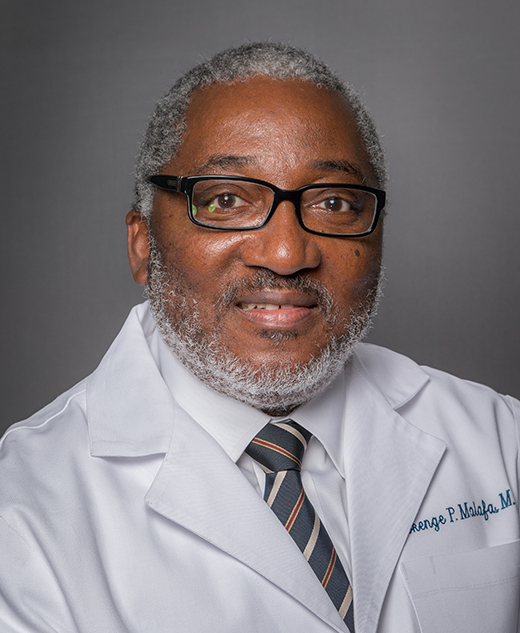
Monkenge Malafa, MD
“If we can prevent the cyst from either growing or progressing, it could delay the development of something bad and could be an option rather than surgery,” said Mokenge Malafa, MD, a gastrointestinal surgeon and lead investigator of the phase 2 trial.
Patients on the trial will be randomly assigned to a placebo group or a group that receives a special form of vitamin E that was created in Malafa’s lab. In the lab, the vitamin E compound was able to selectively kill cancer cells without affecting normal cells. It also could help boost the immune system.
The trial will enroll more than 200 patients with low-risk IPMNs. They will take a pill twice a day for three years in hopes that those who receive the vitamin E compound will see cysts shrink or not progress.
“This is very exciting for us. Because of the interception center and the way we have the infrastructure, we are able to screen these patients, and that gives us a unique population,” Malafa said. “As you can imagine, this is very tricky to manage in the regular clinics because there are just so many factors.”
After a more than 20-year career in pancreatic cancer at Moffitt, Malafa says the trial and the Pancreatic Interception Center are the biggest steps forward he has experienced in disease prevention and early detection.
‘I am Fighting for Time’
Because Don was originally diagnosed with stage 1 pancreatic cancer, he was a candidate for Whipple surgery, a complex procedure that removes the head of the pancreas, a portion of the small intestine, gallbladder, part of the bile duct and occasionally a portion of the stomach.
The surgery comes with a laundry list of potential long-term side effects, such as decreased pancreatic function, diabetes and difficulty digesting. But it’s a pancreatic cancer patient’s best chance at survival. With Don’s history of comorbidities — diabetes and congestive heart failure — he wanted to be treated at a specialized cancer center.
At Don’s first meeting with his care team at Moffitt, his surgeon, Malafa, said he would be a good candidate for robotic surgery. He had the Whipple surgery in July 2023 and had a remarkable recovery that landed him back home only five days later.
However, during the surgery, the surgical team discovered the cancer had spread to some lymph nodes, changing Don’s diagnosis to stage 3. It was a devastating blow, but he stayed focused on his recovery and next treatment steps.
“There’s the physical recovery and there’s the mental recovery. You know what the numbers are, you looked something up that you wish you hadn’t,” Don said. “I am fighting for time and quality of life with my kids and grandkids. If I fight it right and do everything they want me to do, it gives you a reason to keep living and maybe you will be one of the people who can get through it.”
After his surgical drains were removed, Don excelled in physical therapy. He changed his diet and began walking the lobby of his building. In the fall of 2023, he began chemotherapy and immunotherapy treatment. He feels fatigued at times but has returned to playing golf and spends as much time with his two children and four grandchildren, ages 14 to 20, as he can.
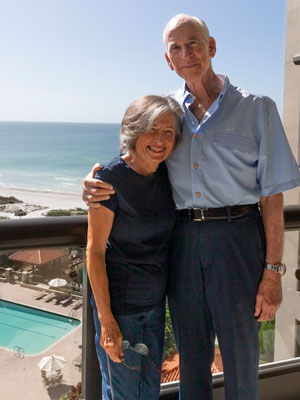
Don and his wife, Randi, have decided not to take any time for granted.
The family is also dedicated to spreading awareness about screening and finding more ways to prevent pancreatic cancer.
“If we could get more people to be screened like I did, it could save more lives,” Don said.
They want to see genetic testing become more accessible and more testing and scans suggested at annual checkups. They hope research ultimately leads to a blood test that can detect pancreatic cancer before an individual is symptomatic and the disease has spread.
“Pancreatic cancer is just dreadful,” Randi said. “We need to summon the medical army together and find a way to find it earlier.”
Even though they’ve been married for 56 years, Randi says she is seeing a totally new side of her high school sweetheart. His bravery and determination have been unmatched, and the pair have decided not to take any time for granted.
“It makes you think big thoughts. It changes you,” Randi said. “For a while, we were grieving for this path that we are on, but I said, ‘Nobody has a crystal ball to know when anything may happen. We have to focus on the fact that we are living. Let’s embrace this and find moments of joy every day.”
This story originally appeared in Moffitt's Momentum magazine.


